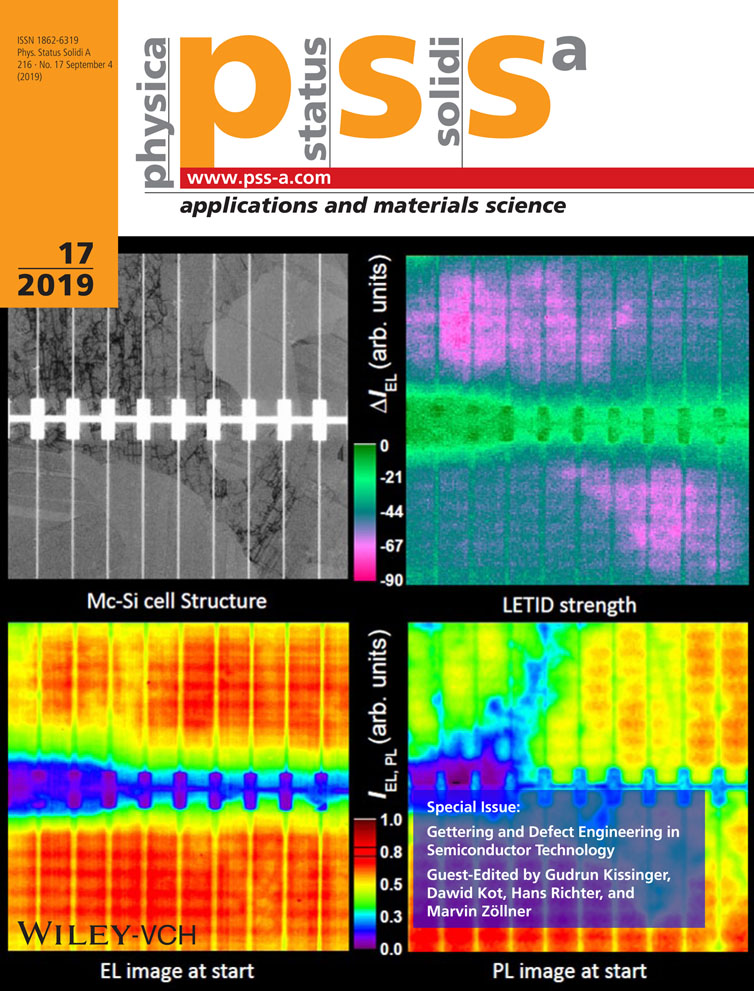Observation of the Stacking Faults in In0.53Ga0.47As by Electron Channeling Contrast Imaging
Abstract
The observation and interpretation of Frank stacking faults, Shockley stacking faults, Lomer dislocations, and 60° misfit dislocations, which have similar line shapes in the (001) In0.53Ga0.47As crystalline surface, are performed with the electron channeling contrast imaging (ECCI) technique. To minimize the backscattered electron (BSE) contrast that resulted from the surface morphology, a relatively flat region is first selected and compared with an atomic force microscopy (AFM) image and then, subsequently, examining ECCI with transmission electron microscopy (TEM)-like invisibility criteria. By orthogonally choosing the diffraction vector g between (220) and (2-20), misfit dislocations seem to be always visible but partially faint in the g parallel to the line direction on the surface. With respect to the image contrast, Frank stacking faults and Lomer dislocations are likely to be completely invisible for parallel g. The criteria are further confirmed by cross-sectional TEM analysis, which shows a preferred homogeneous surface nucleation.
Conflict of Interest
The authors declare no conflict of interest.




